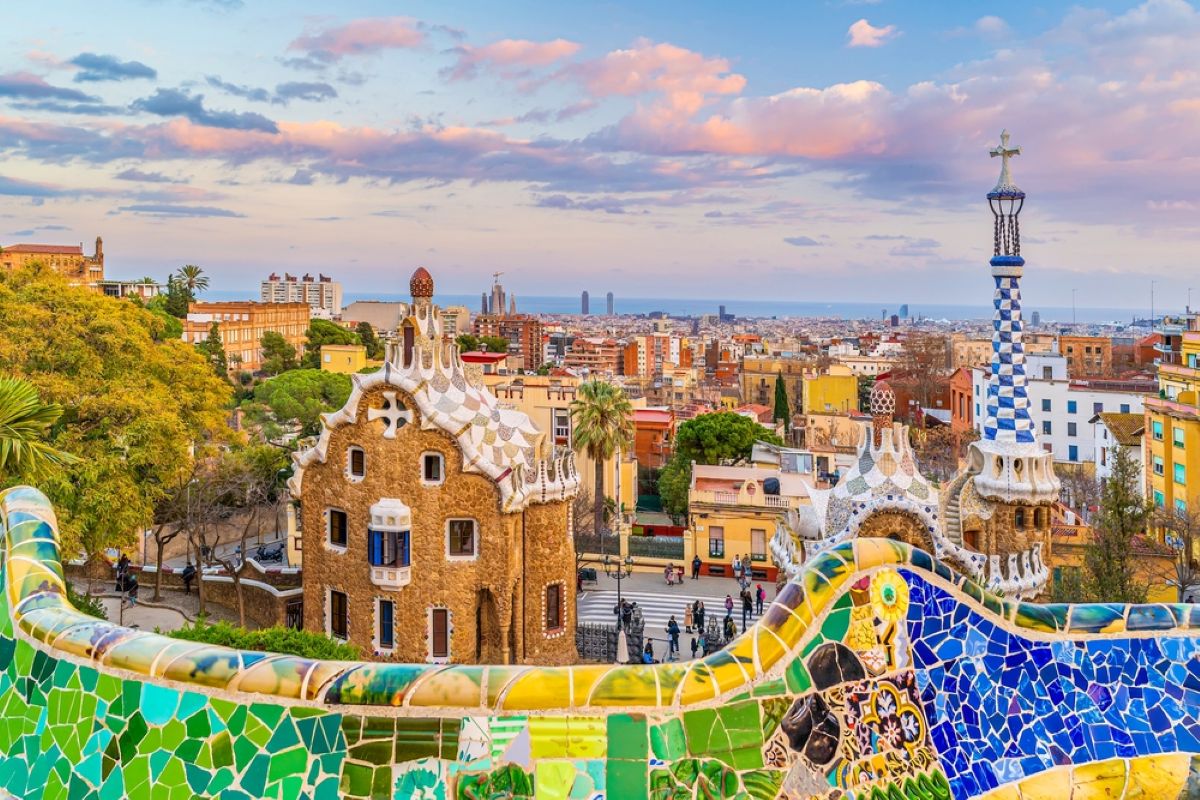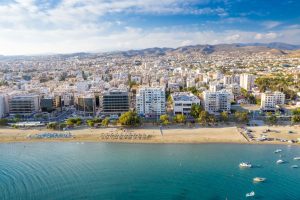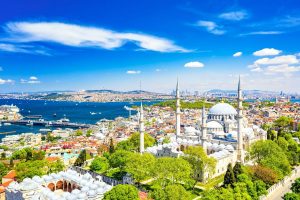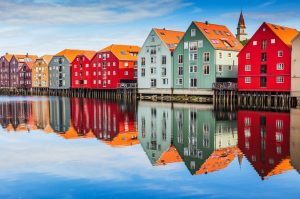Barcelona – capital of Catalonia, home of Gaudí, and the setting of countless tapas dreams – is like a lively kaleidoscope: turn it just a little, and new, colorful patterns of history, architecture, and sea views appear. Whether you’re standing at Plaça de Catalunya for the first time or have long become a regular at a beach café – this city knows how to enchant every visitor in its very own way.
Top Attractions in Barcelona
Sagrada Família
Like a dream cast in stone, Gaudí’s masterpiece, the Sagrada Família, rises above the Eixample district – a cathedral that feels more like a living sculpture than a building. The delicate towers tell biblical stories in stone, while inside, colorful stained-glass windows transform the sunlight into a kaleidoscope of colors. Every corner is symbolic, every stone part of a greater plan. After more than 140 years of construction, the finish line is in sight: by 2035, the basilica should be structurally complete. The last crane may already be waiting in the wings.
Fun Fact: The Sagrada Família only received its first official building permit in 2019 – 137 years after construction began. Until then, it was technically being built “illegally.” To this day, it is not financed by investors, but exclusively by donations and entrance fees – a world heritage site that visitors help build!
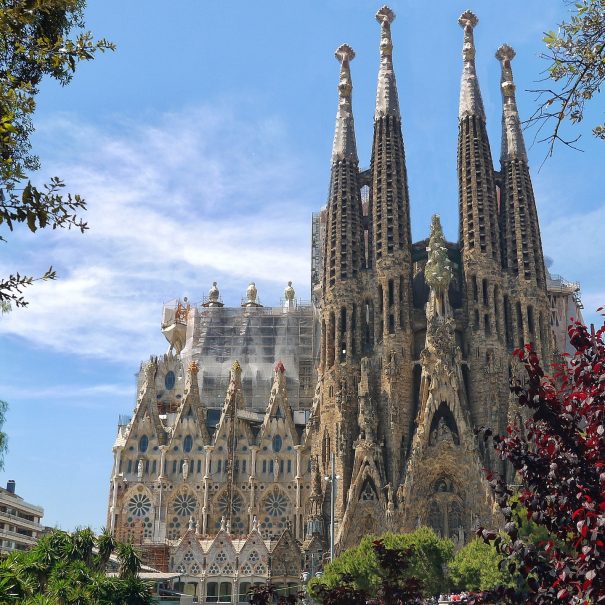
Park Güell
With its colorful mosaic benches, winding staircases, and imaginative columned halls, Park Güell feels like an open-air comic world from Gaudí’s daydreams. From the famous “Sala Hipòstila” – a hall of 86 Doric columns – the path leads directly to the legendary serpentine bench, snaking through the sky like a colorful dragon and immortalized on millions of selfies. Early risers are rewarded with a magical sunrise over Barcelona’s rooftops, while night owls must stick to timed entry slots. The park is not just an architectural masterpiece but also a peaceful retreat filled with Mediterranean plants, artistic details, and hidden corners. A touch of fairytale forest in the middle of the city – and proof that architecture can be playful, visionary, and natural all at once.
Barri Gòtic
The Gothic Quarter is like a medieval labyrinth of narrow alleys, courtyards, and cathedrals, where GPS signals quickly give up. Around every corner you’ll find small boutiques, tapas bars, and street musicians, lending the streets a cinematic atmosphere. Getting lost is part of the charm – searching often leads to the best discoveries. Between gothic arches and moss-covered walls, you’ll stumble upon squares that feel like secret stages. Come at night and discover the quiet magic of illuminated façades.

Casa Batlló
Between 1904 and 1906, Antoni Gaudí transformed Casa Batlló, once an unremarkable residential house, into a fantastical fairytale of water and imagination. The façade resembles a living ocean: scale-like ceramic tiles shimmer like fish skin, wave-shaped balconies resemble coral, and the roof arches like the back of a sleeping dragon. Inside, soft light filters through colorful skylights, as if someone had placed a kaleidoscope in the ceiling. Organic shapes, flowing lines, and whimsical details turn every room into an experience.
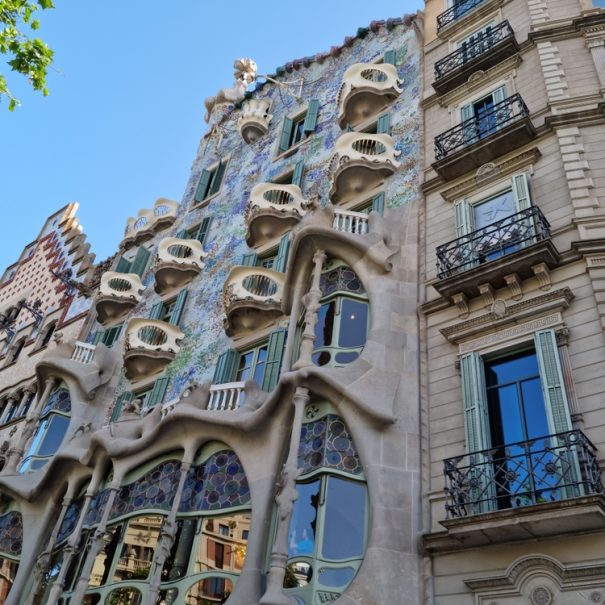
Mercat de la Boqueria
Just a few steps from La Rambla lies a paradise for foodies, gourmets, and hungry wanderers: Mercat de la Boqueria is Barcelona’s oldest food market – and probably its liveliest. Seafood piles up like works of art, tropical fruit gleams like polished gems, and the scent of sizzling paella drifts from the market’s mini bars. A stroll through the aisles is like a culinary trip around the world. Arrive hungry, and you’ll leave with both hands full.
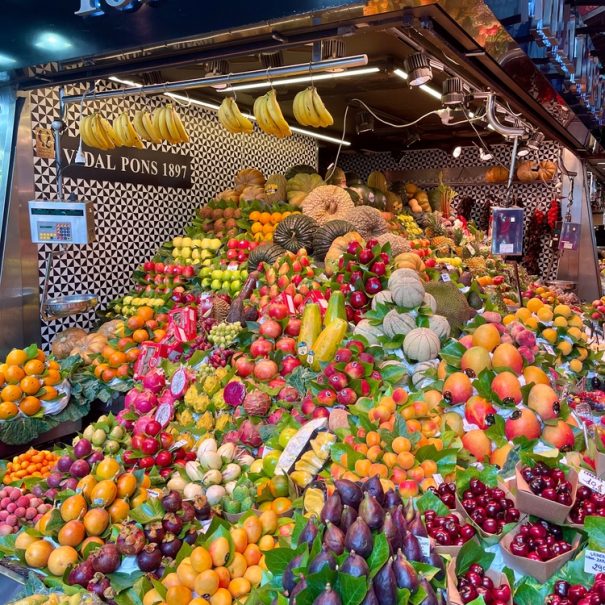
La Barceloneta
Where fishing nets were once mended and sardines sorted, sea breeze now meets city vibes. La Barceloneta is Barcelona’s answer to the question: “Beach or city?” – and simply says, “both!” In the morning, joggers circle the promenade, at midday both sun and beachgoers sizzle, and in the evening the sand turns into an open-air living room with picnic blankets, tapas, and views of the Mediterranean. Adventure seekers paddleboard, while those who stay seated find happiness in a cool glass of sangria and the sight of the iconic W Hotel, seemingly ready to take off.

Best Scenic Viewpoints
Bunkers del Carmel
On the Turó de la Rovira, one of Barcelona’s highest points, the remains of an anti-aircraft battery from the Spanish Civil War rise into the sky. Where soldiers once scanned the horizon, locals and visitors now gather to enjoy perhaps the city’s best panoramic view. The old bunkers serve as nostalgic viewing terraces, and at sunset, the area transforms into an informal open-air living room: blankets spread out, snacks unpacked, the sky glowing pink – and all of Barcelona at your feet.
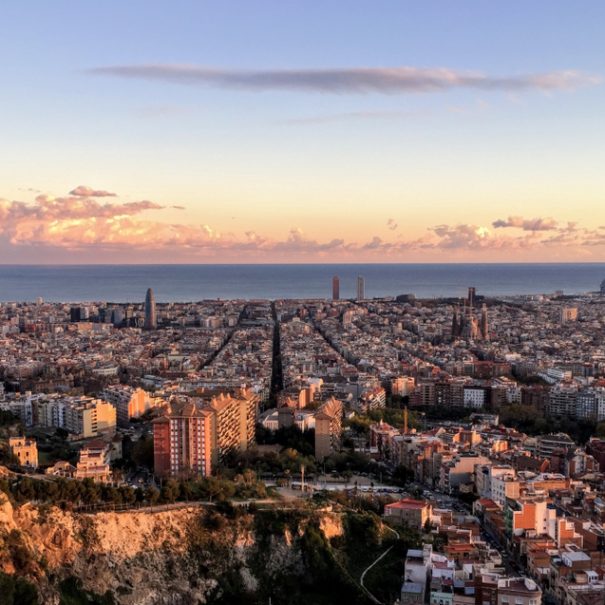
Montjuïc Castle
High above the harbor sits Castell de Montjuïc – less of a fairytale citadel, more of a stone-carved history book with sea views. Arrive in style by cable car, gliding over palms and parks while the city pulses below. At the top, you’ll find a mix of battlement romance and fortress flair – complete with cannons that now only compete with the sun’s shine. The view stretches far: from the container cranes of the harbor up to Tibidabo – and on clear days, perhaps even to your next holiday dream.
Fun Fact: Montjuïc Castle was originally built as a military fortress and later used as a prison. In the 1920s, it became notorious as a prison for political prisoners during the dictatorship of Primo de Rivera.
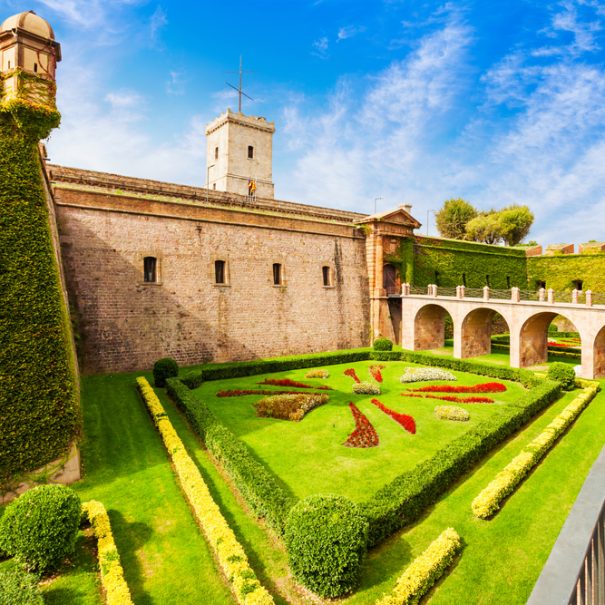
Tibidabo & Temple Expiatori del Sagrat Cor
High above Barcelona rises Tibidabo – a blend of nostalgia, thrills, and heavenly altitude. Since 1901, its vintage amusement park has spun carousels and rustic roller coasters against a spectacular panoramic backdrop. Even higher towers the neo-Gothic Basilica Sagrat Cor, whose illuminated silhouette glows like a celestial guardian over the city at night. Inside, a glass elevator takes you up beneath the Jesus statue – for perhaps Barcelona’s most peaceful high-altitude rush.
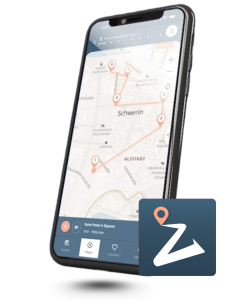
Discover 70+ cities worldwide with professional audio guides – and counting! Thanks to integrated navigation, you’ll easily find your way, even without an internet connection. Whether it’s famous highlights or hidden gems – Plazes brings exciting tours and vivid stories straight to your smartphone. Completely free and no registration required. Download now and get started!
Culinary Highlights for Food Lovers
Disfrutar
At Disfrutar, three ex-El Bulli chefs unleash a sensory firework that takes diners on a journey between illusion and innovation. Here, olives burst in smoke clouds, pasta is shaped from transparent jelly – and even the simplest bite plays virtuously with taste, texture, and expectation. Two Michelin stars crown this creative chaos, which seduces without ever going too far. Reservations must be made months in advance – and your appetite should be prepared for surprises.
Quimet & Quimet
Barely wider than a bookshelf and stacked to the ceiling with bottles, this cult standing bar in Poble Sec is a temple for tapas aficionados. Here, bites are not arranged but composed: stacked like little works of art. The legendary combination of pickled artichoke, salty anchovies, and a touch of truffle honey is an explosion on the palate. Add a house vermouth – and suddenly you’re in the Barcelona of bygone days, when bars had no seats but plenty of character.

El Nacional
Part Belle Époque, part market hall – El Nacional is Barcelona’s most elegant dining adventure. Under a magnificent Art Nouveau glass roof, a culinary walk through Spain unfolds: four stylish restaurants and several bars bring together Galician octopus, Andalusian tapas, Catalan specialties, and Basque pintxos. Oysters are served with cava, jamón ibérico is carved straight from the leg – and every dish feels like a small journey.
Insider Tips & Hidden Gems
Hospital de Sant Pau
Expecting a dull hospital? Think again: Hospital de Sant Pau looks more like a fairytale campus than a place for blood pressure checks and visiting hours. Early 20th-century modernist genius Lluís Domènech i Montaner created a complex of light-filled pavilions, glittering tiles, mosaics, and healing-garden charm – built on the idea that beauty aids recovery. Today, no patients walk its underground corridors, only amazed visitors wondering if Barcelona might accept their insurance too.
Fun Fact: The complex was designed so that sun, air, and art contributed to healing – essentially a Mediterranean wellness cure by prescription. No wonder Hospital de Sant Pau is now a UNESCO World Heritage Site.

Laberint d’Horta
Barcelona’s oldest park is a green time machine – and a real brainteaser for adventurous walkers. Among cypress hedges, pavilions, and marble statues hides a classical labyrinth that’s worth far more than a selfie. Anyone venturing in should bring curiosity and patience: the path to the center is tricky – where the statue of Eros, god of love, awaits, half mocking, half romantic. Find him, and you don’t get a rose – but at least you’ll find the way out.
Jardins del Teatre Grec
Looking for a touch of antiquity on Montjuïc? You’ll stumble upon it in the green: nestled in a quiet hollow lies Teatre Grec, an open-air theater in the style of the ancient Greeks – built in 1929 but charming enough to pass for the real thing. In summer, its stage comes alive with concerts, plays, and dances under the stars. In front, rose gardens bloom with fragrance, where both visitors and a few majestic cats claim their favorite shady spots. Entry? Free. Atmosphere? Priceless.
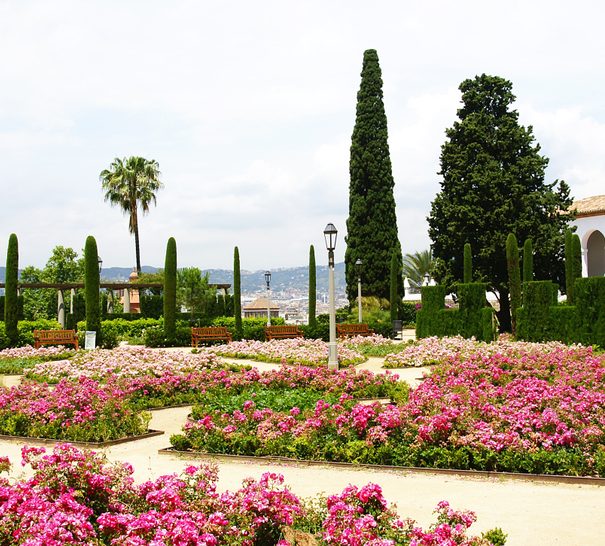
Poblenou Street Art Walk
Where machines once rattled, skateboards now roll – and walls speak in color: Poblenou is Barcelona’s open-air gallery, where graffiti and murals on factory façades look like thought bubbles of an entire city. Between co-working spaces and sunburnt warehouses, artists from around the world tell stories of change, resistance – and sometimes cats in astronaut suits. The vibe? Bushwick meets the Mediterranean. Only here, the flat white tastes as good as it looks.
Museums for Culture and History Enthusiasts
Museu Picasso
Think Picasso was just the guy with crooked faces? Museu Picasso will prove you wrong: over 4,000 works showcase his beginnings as a gifted teenager through to his artistic experiments, where faces appear in profile and frontal view at once. All this is displayed not in a bland concrete block but across five gothic palaces – essentially a stroll through centuries of art with an architectural upgrade. And yes, even young Pablo had to draw anatomically correct before he could start putting eyes in unexpected places.
Museu Nacional d’Art de Catalunya (MNAC)
Like a temple of art, MNAC crowns Montjuïc – its façade alone looks like Versailles merged with a waterfall. Climbing its baroque steps rewards you with a view over Barcelona that feels like a work of art itself. Inside, the experience continues: Romanesque frescoes, Gothic altarpieces, modernist masterpieces – all curated so lovingly that even the most art-shy visitor suddenly googles “Catalan modernism.”
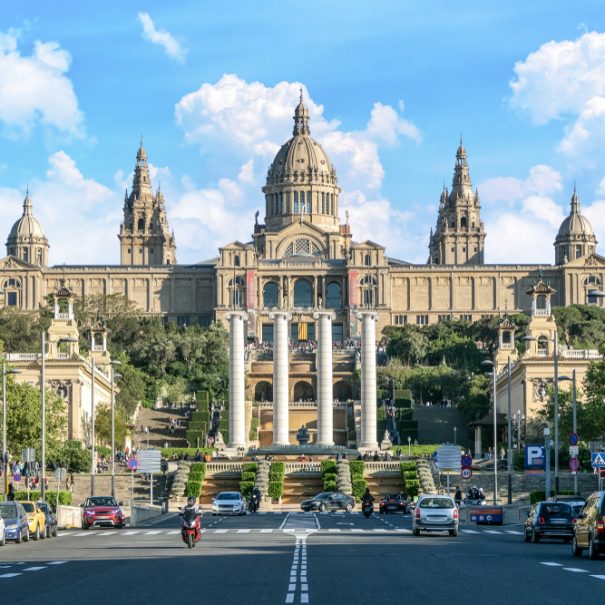
CosmoCaixa
Science to touch – and marvel at! At CosmoCaixa, young and old explorers alike can watch the rainforest sweat, while sloths (almost) move live through the undergrowth. In the Foucault pendulum corridor, only the pendulum swings – but quietly, so does the Earth. And for those who never see stars at night because the city never sleeps, the planetarium delivers them at the push of a button – free from light pollution and clouds. A museum that proves curiosity has no age limit.
Shopping & Souvenirs
Barcelona is a city where even strolling becomes an art form – and a little adventure. Whether you’re looking for a design one-off, a vintage treasure, or just a souvenir that doesn’t scream “Made in China”: you’ll find it here.
Passeig de Gràcia is Barcelona’s elegant showcase boulevard. Between Chanel and Louis Vuitton, Gaudí’s curving balconies peek out – a stroll between high fashion and architectural history. To avoid blowing your budget, head a few metro stops away to the charming Gràcia district, where small, independent boutiques sell handmade jewelry, sustainable fashion, and plenty of character.
A true piece of Barcelona awaits at La Manual Alpargatera, the city’s oldest espadrille workshop. It smells of hemp rope and tradition, and if you’re lucky, you’ll be advised by the same hands that once served Salma Hayek. No joke.
For patient treasure hunters: the flea market Els Encants Vells is chaotic, dazzling, noisy – and simply wonderful. Among vinyl records, furniture, and curiosities from three centuries, it’s worth rummaging under the spectacular mirrored roof that looks like a UFO from a design gallery.
And the suitcase check at the end: for something more than a fridge magnet, grab some brandada de bacalao (salt cod cream), a tin of creamy nostalgia, or a bottle of Catalan cava – sparkling not just in the glass but sometimes unintentionally in your checked luggage.
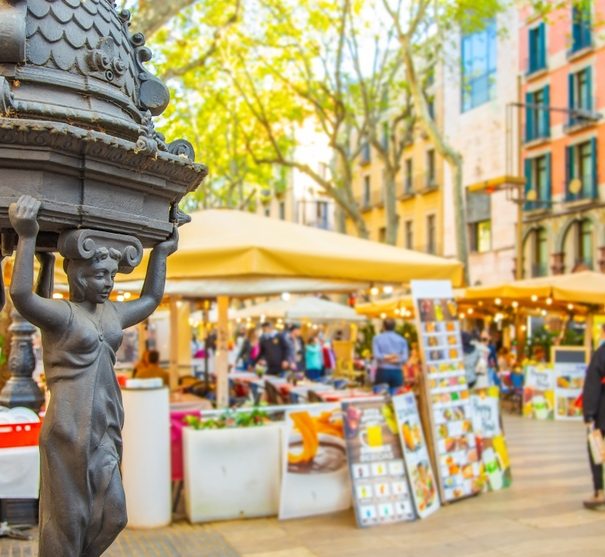
Photospots in Barcelona
Pont del Bisbe
The delicate bridge over Carrer del Bisbe looks like a gothic architect’s nostalgic daydream – yet it dates from 1928. Precisely because of that, it’s an Instagram favorite. For the perfect shot, come early in the morning: the old town still sleepy, the light soft, and only a few seagulls sharing the moment.
Plaça de Gaudí
Small, green, and often overlooked: Plaça de Gaudí sits at the back of the Sagrada Família and offers a picture-perfect reflection of the basilica in its lily pond. Tourists and locals alike sit on benches, munching on bocadillos and staring at their phones, while their cameras struggle to capture the water’s glimmering reflections.
Arc de Triomf
Not as imposing as its Parisian cousin, but far more charming: Barcelona’s red-brick triumphal arch is less monument, more gateway to the city’s relaxed side. Walk through the palm-lined boulevard straight into Parc de la Ciutadella – past street musicians, skaters, and bubble artists. Here, the real Barcelona beats: loud, laid-back, and full of life.
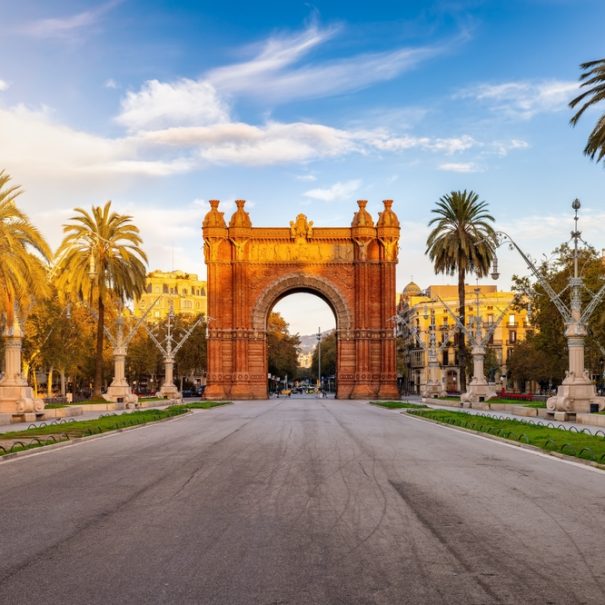
Tips for Cruise Passengers
Most ocean liners dock at Moll Adossat. From here, the city is not far, but in flip-flops it’s not exactly a dream walk. Luckily, the light-blue T3 Portbus takes you in about ten minutes to the Columbus Monument at the bottom of La Rambla. For a more stylish arrival, grab a taxi – with a flat fare into the center, no need to fear surprises on the meter.
Alternatively, a 12-minute walk brings you to Drassanes metro station (green line L3) – perfect if you prefer to “drive” the trains yourself (at least in your mind). For unlimited sightseeing, the Hola BCN! day ticket is worth it – covering unlimited metro, bus, and tram rides, without having to fumble for change. And if you need to stash your luggage, lockers are available at Estació de França or directly at Cruise Terminal B – better to drop your suitcase than drag it noisily through the old town.
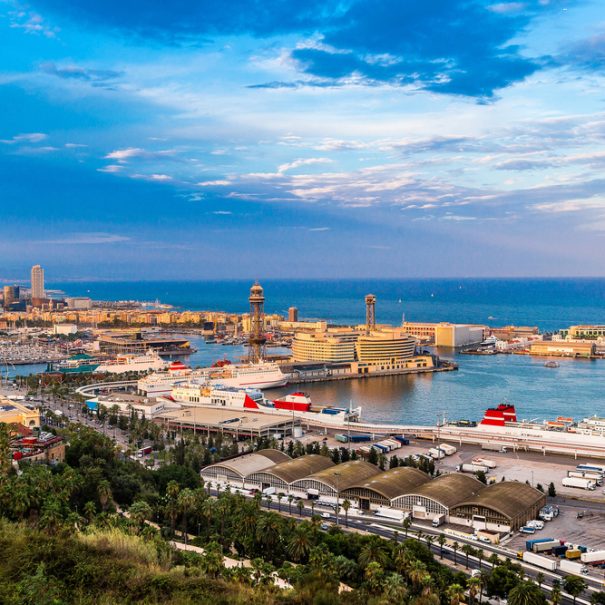
Tips for Solo Travelers
Barcelona is the perfect city for solo adventures: lively, open, and usually friendlier than most group chats. The metro runs almost around the clock, many main streets are well lit – and as long as you don’t stroll down La Rambla with your phone in your back pocket, pickpocketing is usually avoidable.
For encounters beyond the sights, try coworking cafés like cozy Morrow Coffee in El Born – where people type emails and swap travel tips. Need a starting point? Head to the official tourist office at Plaça de Catalunya. There you’ll find maps, SIM cards, and spontaneous suggestions – whether you’re in the mood for a street festival with cava instead of a club night. And in the evening? Many hostels – like the stylish Generator – host tapas rounds or bar-hopping events in groups. Perfect if you don’t want to face a mountain of patatas bravas alone.
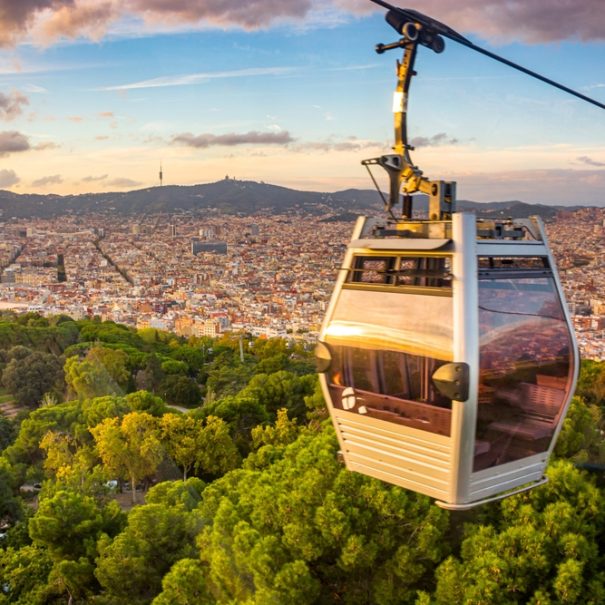
Conclusion
Barcelona is a city that effortlessly unites opposites – gothic walls meet modern architecture, street art meets masterpieces, siesta meets nightlife. You can stroll the narrow alleys of the Barri Gòtic in the morning, sunbathe at the beach at midday, and linger over tapas and cava in a Gràcia bar at night.
Between world-famous landmarks like the Sagrada Família and Park Güell and hidden squares full of local magic, Barcelona offers countless ways to experience the city in your own way. Whether it’s art and culture, sea and markets, or viewpoints and sunsets – everyone will find their Barcelona here.
Whether it’s your first time or you already know where to find the best crema catalana – this city keeps surprising you. And if you leave with one sunset too many in your memory and a few churro crumbs in your backpack, you’ll know: it definitely wasn’t your last visit.
FAQs
1. How much time should you plan for the main Gaudí buildings?
Plan at least half a day for the Sagrada Família (including the tower visit) and around 1 ½–2 hours each for Casa Batlló or Casa Milà (La Pedrera). If you also want to visit Park Güell, you should set aside a full day just for Gaudí, as the distances between the sites are not short and admission everywhere is based on timed entry slots.
2. Which market is a good alternative if La Boqueria feels too crowded?
The Mercat de Santa Caterina (Metro L4 “Jaume I”) is popular with locals, featuring colorful stalls beneath a wavy, multicolored roof and offering much more space. Street food fans should also check out Mercat del Ninot in the Eixample district – here you can sample freshly prepared tapas at small counters.
3. Do you need a public transport pass in Barcelona, or are single tickets enough?
If you’re staying 3 days or longer and using the metro or bus daily, the Hola BCN card (unlimited rides, 48–120 hours) is the most cost-effective option. For a short trip, the T-Casual (10 rides, transferable) is usually sufficient. Within the old town and city center, however, you’ll often get around faster on foot than by metro.
4. How safe is Barcelona, and which neighborhoods should you avoid at night?
Barcelona is generally safe, and violent crime is rare. The biggest risk is pickpocketing at hotspots (Las Ramblas, Metro lines L3/L1, beaches). Avoid poorly lit alleys at night around the lower part of Las Ramblas and the area of El Raval south of Carrer Hospital. Keep valuables close to your body, avoid using your smartphone openly on train platforms, and use a carabiner in bars to secure bags to chair legs.
5. How accessible is Barcelona for wheelchair users and strollers?
Over 90% of metro stations have elevators, curbs are mostly lowered, and buses are equipped with ramps. However, the old town has narrow cobblestone streets; it’s best to explore the Gothic alleys during quieter times. Many beaches offer wooden walkways and amphibious wheelchairs (available at the info points).

